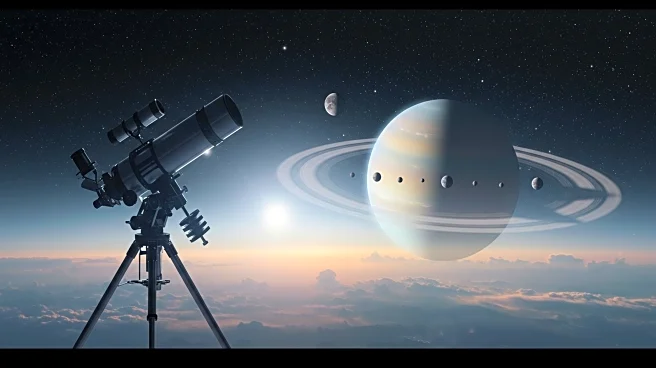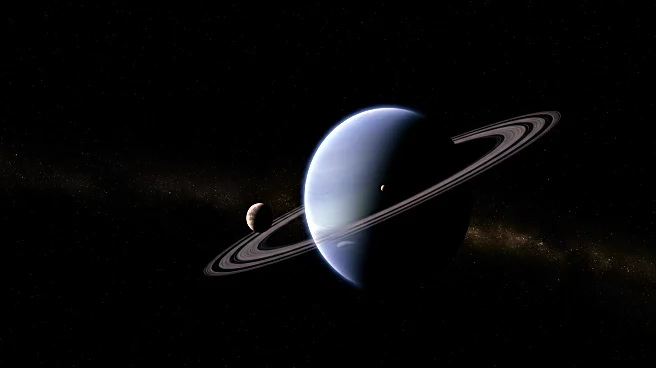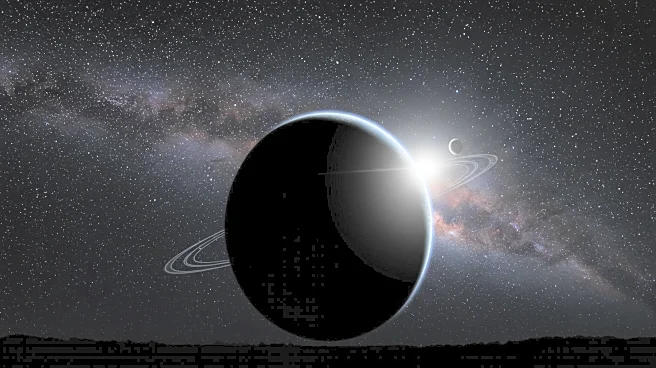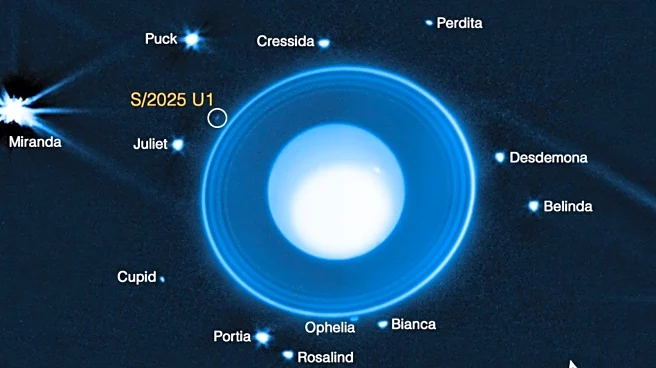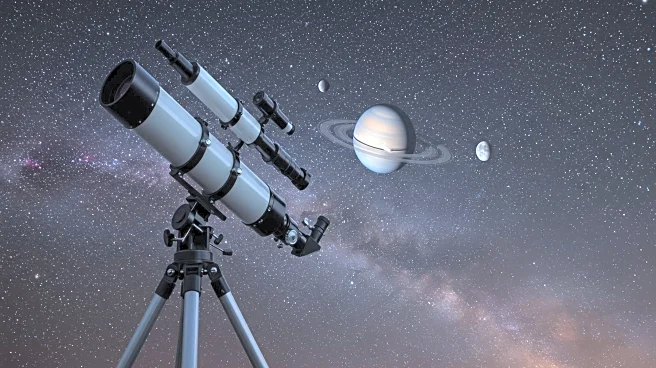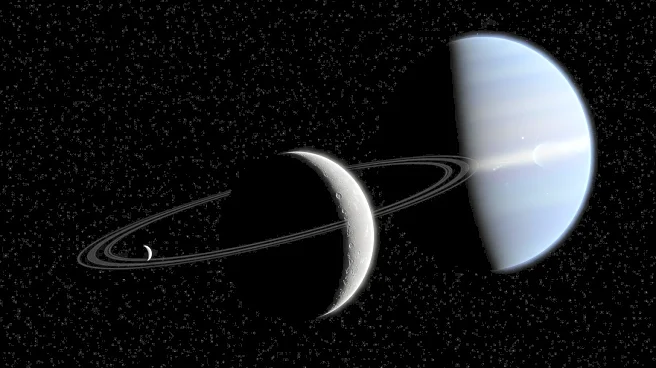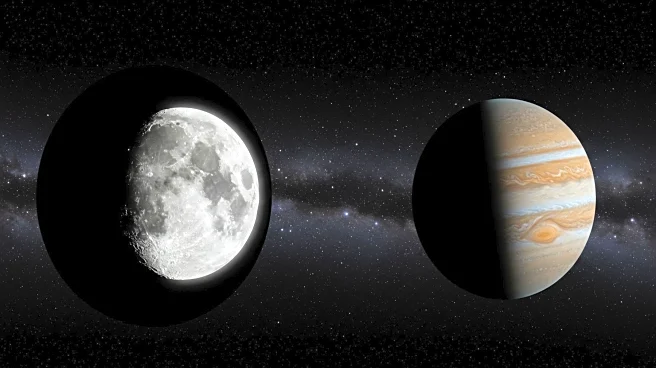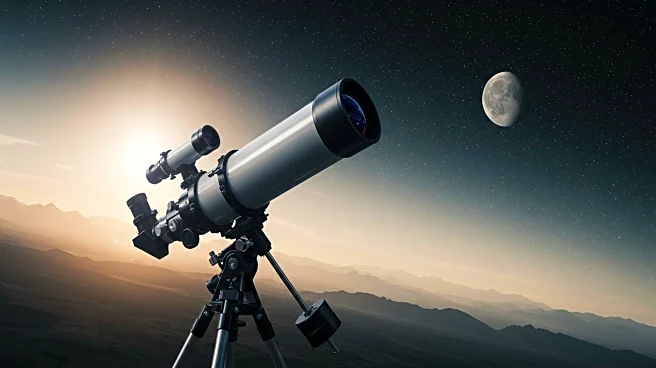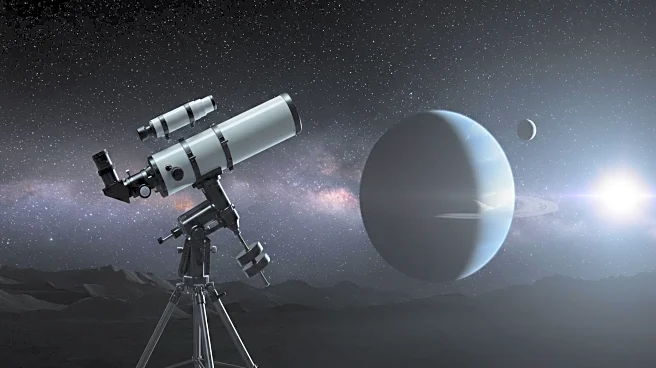What's Happening?
Astronomers have identified a previously unknown moon orbiting Uranus using the James Webb Space Telescope. This discovery increases the number of known moons around the ice giant to 29. The moon was detected through long-exposure images taken by the telescope's Near-Infrared Camera. Measuring approximately 6 miles in diameter, the moon was not visible during previous observations by Voyager 2 and the Hubble Space Telescope. The moon, temporarily named S/2025 U1, is located about 35,000 miles from Uranus's center, orbiting between the moons Ophelia and Bianca. The discovery suggests that the moon and Uranus's rings may share a common origin, potentially resulting from an ancient event.
Why It's Important?
The discovery of a new moon around Uranus is significant for understanding the planet's complex system of rings and moons. It highlights the capabilities of the James Webb Space Telescope in revealing previously hidden celestial objects. This finding may provide insights into the formation and dynamics of Uranus's rings and moons, which could have implications for planetary science and the study of other ice giants in the solar system. The discovery also underscores the importance of continued exploration and observation of distant planets, potentially leading to further discoveries and advancements in astronomy.
What's Next?
Future missions to Uranus, including planned exploration in the early 2030s, could provide more detailed observations of the planet's atmospheric dynamics, magnetic field, and ring system. These missions may help determine whether Uranus's moons are ice-covered ocean worlds and shed light on the planet's extreme tilt and rings. The International Astronomical Union will need to approve a formal name for the newly discovered moon, following the tradition of naming Uranus's moons after characters from the works of William Shakespeare and Alexander Pope.


